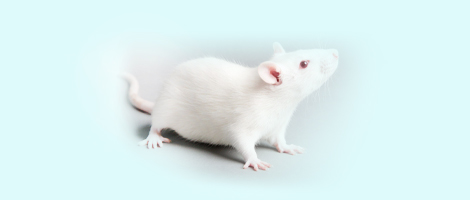| 1 |
高聪慧, 李吉梅, 徐波, 等. 高原鼢鼠和高原鼠兔血液参数和血红蛋白亚型对不同海拔生境的响应[J]. 生理学报, 2023, 75(1):69-81. DOI: 10.13294/j.aps.2022.0105 .
|
|
GAO C H, LI J M, XU B, et al. Responses of blood parameters and hemoglobin subtypes in plateau zokors and plateau pikas to different altitude habitats[J]. Acta Physiol Sin, 2023, 75(1):69-81. DOI: 10.13294/j.aps.2022.0105 .
|
| 2 |
敖强国, 宋世涛, 邹慧. 高原低压低氧环境对平原健康男青年血像和肾功能影响[J]. 中华保健医学杂志, 2011, 13(6):456-458. DOI: 10.3969/j.issn.1674-3245.2011.06.009 .
|
|
AO Q G, SONG S T, ZOU H. Impact of hypoxia environment at plateau on renal function among healthy male youth[J]. Chin J Health Care Med, 2011, 13(6):456-458. DOI: 10.3969/j.issn.1674-3245.2011.06.009 .
|
| 3 |
刘忠浩, 郭松长, 白祥慧, 等. 低氧暴露下高原鼠兔血液中三种内源性气体分子含量的变化[J]. 基因组学与应用生物学, 2021, 40(4):1539-1543. DOI: 10.13417/j.gab.040.001539 .
|
|
LIU Z H, GUO S C, BAI X H, et al. Changes of three endogenous gas molecules in the blood of plateau pika exposed to hypoxia[J]. Genom Appl Biol, 2021, 40(4):1539-1543. DOI: 10.13417/j.gab.040.001539 .
|
| 4 |
张湑泽, 付林, 邹小艳, 等. 低氧暴露下高原鼠兔肺组织间隙连接蛋白40表达分析[J]. 兽类学报, 2022, 42(5):572-578. DOI: 10.16829/j.slxb.150686 .
|
|
ZHANG X Z, FU L, ZOU X Y, et al. Expression analysis of gap junction protein 40 in lung of plateau pika exposed to hypoxia[J]. Acta Theriol Sin, 2022, 42(5):572-578. DOI: 10.16829/j.slxb.150686 .
|
| 5 |
CHANG Y, ZHANG W, CHEN K, et al. Metabonomics window into plateau hypoxia[J]. J Int Med Res, 2019, 47(11):5441-5452. DOI:10.1177/0300060519879323 .
|
| 6 |
杨卫波, 李素芝, 高钰琪, 等. 急性肾功能损伤在急性高原病发病过程中的差异研究[J]. 第三军医大学学报, 2018, 40(12):1109-1114. DOI: 10.16016/j.1000-5404.201710226 .
|
|
YANG W B, LI S Z, GAO Y Q, et al. Phenotypes of acute renal function injuries in different acute high-altitude diseases[J]. J Third Mil Med Univ, 2018, 40(12):1109-1114. DOI: 10.16016/j.1000-5404.201710226 .
|
| 7 |
BOREA P A, GESSI S, MERIGHI S, et al. Pharmacology of adenosine receptors: the state of the art[J].Physiol Rev, 2018, 98(3): 1591-1625. DOI: 10.1152/physrev.00049.2017 .
|
| 8 |
LI X Y, BERG N K, MILLS T, et al. Adenosine at the interphase of hypoxia and inflammation in lung injury[J]. Front Immunol, 2021, 11:604944. DOI:10.3389/fimmu.2020.604944 .
|
| 9 |
DIAS L, POCHMANN D, LEMOS C, et al. Increased synaptic ATP release and CD73-mediated formation of extracellular adenosine in the control of behavioral and electrophysiological modifications caused by chronic stress[J]. ACS Chem Neurosci, 2023, 14(7):1299-1309. DOI:10.1021/acschemneuro.2c00810 .
|
| 10 |
SEMWAL P, PAINULI S, ABU-IZNEID T, et al. Diosgenin: an updated pharmacological review and therapeutic perspectives[J]. Oxid Med Cell Longev, 2022, 2022:1035441. DOI:10.1155/2022/1035441 .
|
| 11 |
YANG L F, REN S N, XU F, et al. Recent advances in the pharmacological activities of dioscin[J]. Biomed Res Int, 2019, 2019:5763602. DOI:10.1155/2019/5763602 .
|
| 12 |
OCH A, PODGÓRSKI R, NOWAK R. Biological activity of berberine-a summary update[J]. Toxins(Basel), 2020, 12(11):713. DOI:10.3390/toxins12110713 .
|
| 13 |
SHELL B, FAULK K, THOMAS CUNNINGHAM J. Neural control of blood pressure in chronic intermittent hypoxia[J]. Curr Hypertens Rep, 2016, 18(3):19. DOI:10.1007/s11906-016-0627-8 .
|
| 14 |
SATOH T, MCKERCHER S R, LIPTON S A. Nrf2/ARE-mediated antioxidant actions of pro-electrophilic drugs[J]. Free Radic Biol Med, 2013, 65:645-657. DOI:10.1016/j.freeradbiomed. 2013. 07.022 .
|
| 15 |
HASSANEIN E H M, SAYED A M, HUSSEIN O E, et al. Coumarins as modulators of the Keap1/Nrf2/ARE signaling pathway[J]. Oxid Med Cell Longev, 2020, 2020:1675957. DOI:10.1155/2020/1675957 .
|
| 16 |
SUDARIKOVA A V, FOMIN M V, YANKELEVICH I A, et al. The implications of histamine metabolism and signaling in renal function[J]. Physiol Rep, 2021, 9(8): e14845. DOI:10.14814/phy2.14845 .
|
| 17 |
GRANGE C, GURRIERI M, VERTA R, et al. Histamine in the kidneys: what is its role in renal pathophysiology?[J]. Br J Pharmacol, 2020, 177(3):503-515. DOI:10.1111/bph.14619 .
|
| 18 |
喻昌燕, 孟令杰, 姜念, 等. 蟾皮化学成分和药理活性的研究进展[J]. 中草药, 2021, 52(4): 1206-1220. DOI: 10.7501/j.issn.0253-2670.2021.04.035 .
|
|
YU C Y, MENG L J, JIANG N, et al. Research progress on chemical constituents and pharmacological activities of Bofonis Corium[J]. Chin Tradit Herb Drugs, 2021, 52(4):1206-1220. DOI: 10.7501/j.issn.0253-2670.2021.04.035 .
|
| 19 |
UDDIN M N, ALLEN S R, JONES R O, et al. Pathogenesis of pre-eclampsia: marinobufagenin and angiogenic imbalance as biomarkers of the syndrome[J]. Transl Res, 2012, 160(2):99-113. DOI:10.1016/j.trsl.2012.01.005 .
|
| 20 |
CARULLO N, FABIANO G, D'AGOSTINO M, et al. New insights on the role of marinobufagenin from bench to bedside in cardiovascular and kidney diseases[J]. Int J Mol Sci, 2023, 24(13):11186. DOI:10.3390/ijms241311186 .
|







 ), 白振忠1,2, 薛华1, 郭子旭1, 曹学锋1,2(
), 白振忠1,2, 薛华1, 郭子旭1, 曹学锋1,2( )(
)( )
)
 ), BAI Zhenzhong1,2, XUE Hua1, GUO Zixu1, CAO Xuefeng1,2(
), BAI Zhenzhong1,2, XUE Hua1, GUO Zixu1, CAO Xuefeng1,2( )(
)( )
)